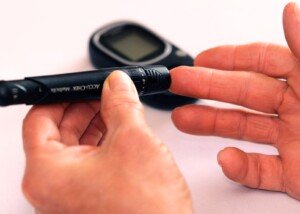
There are several ways to improve your blood sugar levels (glucose metabolism) by making changes to your carbohydrate intake.
You may have increased awareness of glucose metabolism in an effort to prevent type 2 diabetes or even prediabetes.
And not all type 2 diabetics are overweight, by the way — even though obesity is a major risk factor.
“People without diabetes will metabolize most any form of glucose without any problem,” begins Julie Cunningham, MPH, RD, LDN, registered dietitian and certified diabetes educator.
“As some people get older and heavier, they may develop prediabetes, which is essentially a condition in which the body has trouble metabolizing glucose quickly,” continues Cunningham.
“This can be improved by eating complex carbohydrates, such as whole grains, beans, fruits and vegetables, rather than simple carbohydrates, such as white bread, pastries, candy and sweetened beverages.
“Complex carbs are digested more slowly and create less of a spike in blood sugar levels.”
That’s your general way to help control blood sugar — whether you have diabetes or not.
But there are some more refined and clever tricks you can employ to manage and improve your blood sugar levels.
Changes You Can Make with Carbohydrate Intake to Help Improve Blood Sugar
- Limit carb servings to 60 mg or less per meal or snack.
- Eat protein with your highest carb servings, and ideally, with other carb servings such as fruit plates. E.g., deviled eggs with your dish of fruit or fig newtons.
- Don’t eat carbs close to bedtime — or at least, have only a small amount or under 20 g such as a medium apple.
- Be strategic with when you eat carbs. E.g., eat your daily apple or banana right before your step class, chest workout or treadmill run. Have another one of your daily fruit servings in the middle of a weight workout.
- At the conclusion of any workout, have another piece of fruit before your post-workout meal.
- Have your biggest carb serving of the day (pasta, rice, potatoes, etc.) within one hour of your strength training workouts.
- If you decide to indulge in a very quick-acting carb like a large glass of juice, or a helping of apple pie, a bowl of ice cream or fresh baked chocolate chip cookies, coordinate this so that it’s within one hour (ideally 30 minutes) of a strenuous workout, when glucose metabolism is most efficient.
- Space out your carb feedings. If you normally eat four servings of fruit at once, divide this into a separate four servings to be eaten once every 45-60 minutes.
- Limit juice; eat more whole fruit. Increase fiber intake.
- Replace white bread and white rice with whole grain and brown/wild/basmati, respectively.
- Limit processed foods (e.g., granola bars, some cereals, frozen dinners), which are full of quick-acting carbohydrates. Of course, for most people concerned about blood sugar, it’ll be impossible to eliminate altogether favorite processed foods. But DO make an honest effort to cut back.
How to Monitor Your Blood Sugar Levels

Shutterstock/Maya Kruchankova
To check if your glucose metabolism has improved – or at least if it’s normal — buy a home blood sugar test kit from the local drug store.
But don’t become obsessed with frequently checking your blood sugar, as this can become as obsessive as checking your body weight.



























